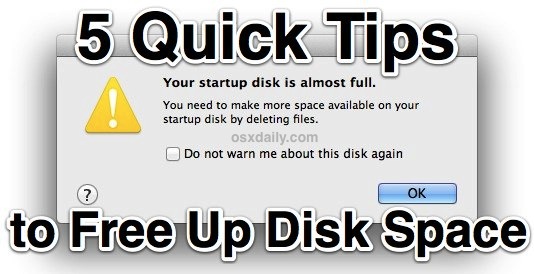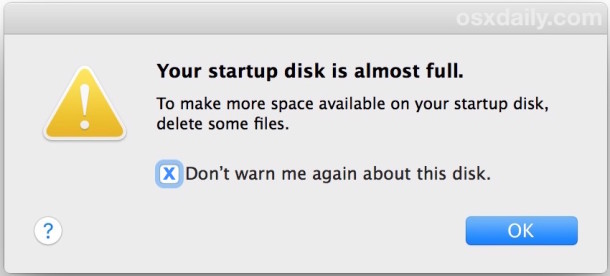

- #Mac os x startup disk full error message how to
- #Mac os x startup disk full error message install
- #Mac os x startup disk full error message password
- #Mac os x startup disk full error message free

Open Finder and navigate to your Photos library (normally, it’s in the Picturesfolder).Once you’ve cleaned up your own picture files, it’s time to get rid of the files your system created. You know, ones of the ground or something? Photos, photos, photos! Talk about taking up a lot of space! First and foremost, select only what you can get rid of, like image copies and maybe some photos that were mistakenly taken. It will also detect leftover files of apps when you manually remove them. It’s very easy and saves you lots of time. You won’t have to search all over for unnecessary files that are left behind when moving an application to Trash. , click Uninstaller, select your application, and then click Uninstall. And that’s exactly the problem you’re trying to resolve. If you do, you’ll leave behind lots of leftover files that may not be obvious to you. But make sure you remove them correctly, don’t just drag them to the Trash. Go through your applications folder and get rid of all the apps you rarely use. Removing old, unused applications is a great way to get some extra space on your startup disk. Cleaner One safely cleans up system caches with just a few clicks. Is a utility that safely cleans up these kinds of files (and pretty much everything else on this list).
#Mac os x startup disk full error message free
Periodically removing them can help free up space, but don’t worry, your Mac will recreate new ones as necessary after you restart your Mac.ĭeleting cache files manually is generally safe for your Mac, but unless you know which files can be safely deleted, it might be better not to manually delete items in this folder without knowing what they are. However, over time, these cache files start to take up a lot of unnecessary space on your hard disk.
#Mac os x startup disk full error message how to
The following sections describe how to handle various issues that affect your Mac’s storage space.Ĭache files are files that help your Mac run programs more efficiently.
#Mac os x startup disk full error message install
But a better solution is to install an optimization application that manages the startup disk space. You would probably delete files and applications from your Mac or even install an internal secondary hard drive.
#Mac os x startup disk full error message password
If you're asked for a password to unlock the disk, enter your administrator password.Īfter Disk Utility is done checking the volume, select the next item above it in the sidebar, then run First Aid again.If the button is dimmed and you can't click it, skip this step for the disk, container, or volume you selected.If there is no Run button, click the Repair Disk button instead.In this example, the last volume on the disk is Macintosh HD - Data.Ĭlick Run to begin checking the selected volume for errors.

For each disk that you're repairing, start by selecting the last volume on that disk, then click the First Aid button or tab.


 0 kommentar(er)
0 kommentar(er)
